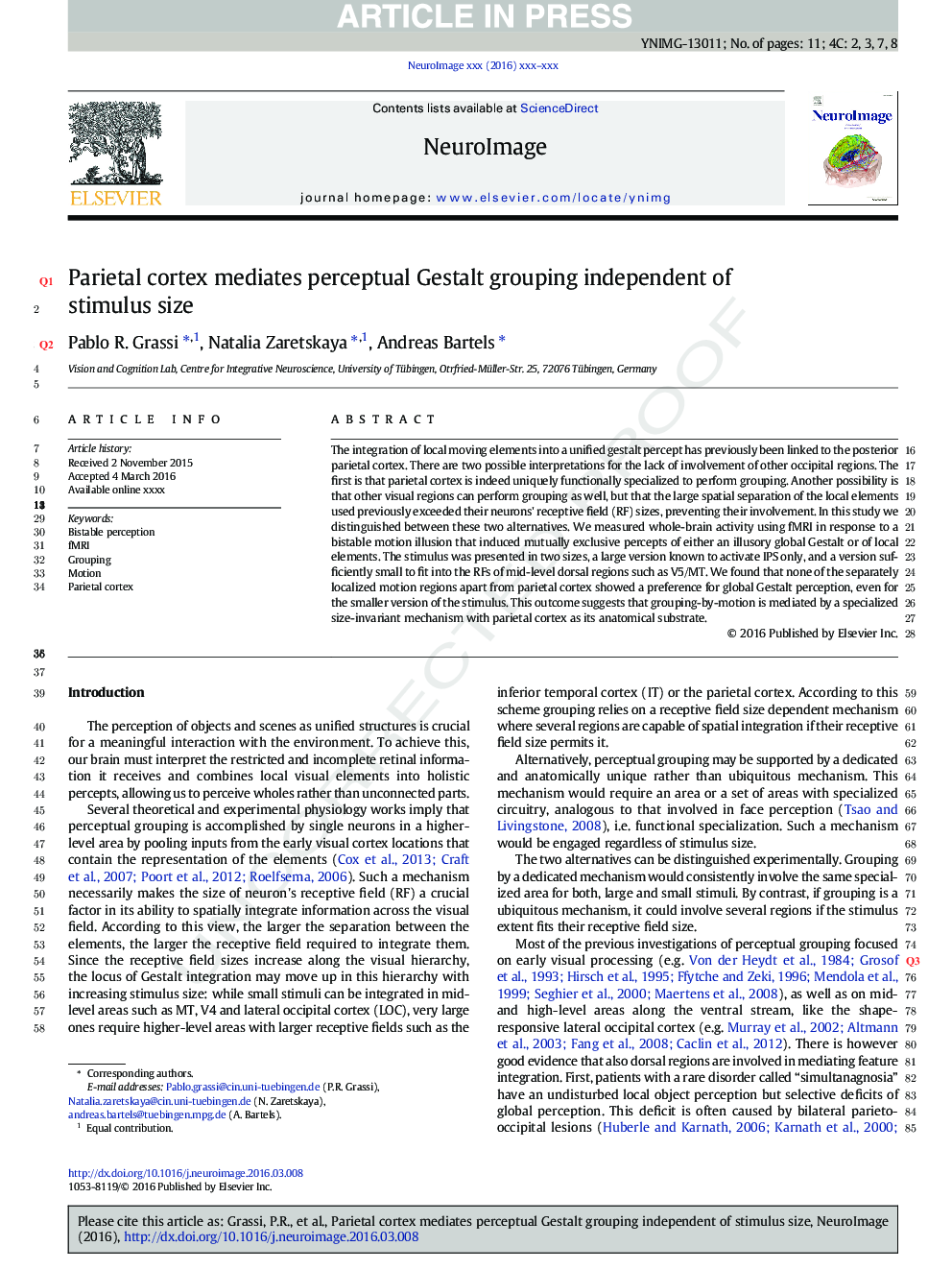| Article ID | Journal | Published Year | Pages | File Type |
|---|---|---|---|---|
| 6023589 | NeuroImage | 2016 | 11 Pages |
Abstract
The integration of local moving elements into a unified gestalt percept has previously been linked to the posterior parietal cortex. There are two possible interpretations for the lack of involvement of other occipital regions. The first is that parietal cortex is indeed uniquely functionally specialized to perform grouping. Another possibility is that other visual regions can perform grouping as well, but that the large spatial separation of the local elements used previously exceeded their neurons' receptive field (RF) sizes, preventing their involvement. In this study we distinguished between these two alternatives. We measured whole-brain activity using fMRI in response to a bistable motion illusion that induced mutually exclusive percepts of either an illusory global Gestalt or of local elements. The stimulus was presented in two sizes, a large version known to activate IPS only, and a version sufficiently small to fit into the RFs of mid-level dorsal regions such as V5/MT. We found that none of the separately localized motion regions apart from parietal cortex showed a preference for global Gestalt perception, even for the smaller version of the stimulus. This outcome suggests that grouping-by-motion is mediated by a specialized size-invariant mechanism with parietal cortex as its anatomical substrate.
Related Topics
Life Sciences
Neuroscience
Cognitive Neuroscience
Authors
Pablo R. Grassi, Natalia Zaretskaya, Andreas Bartels,
